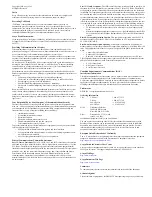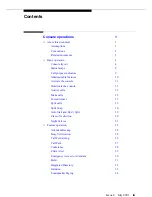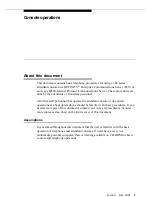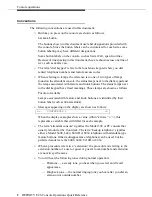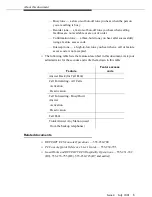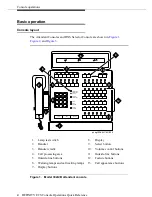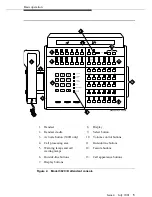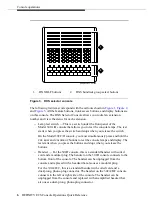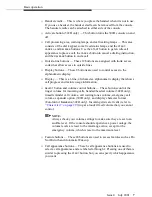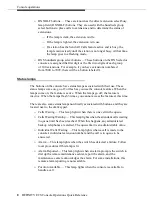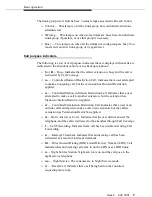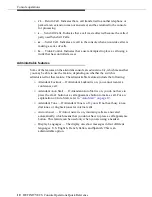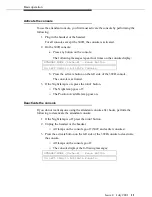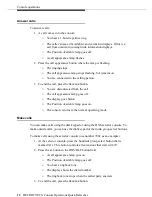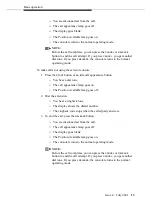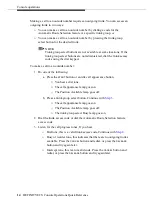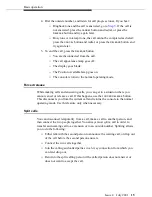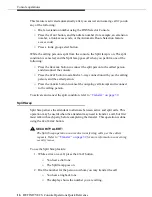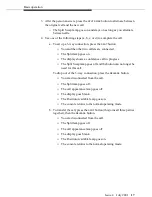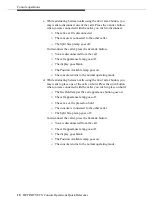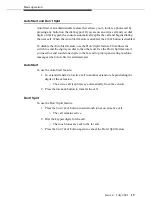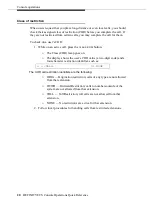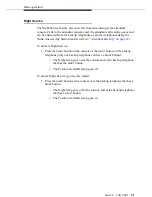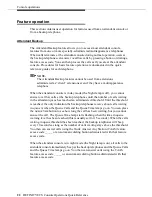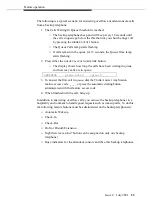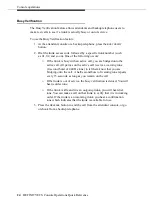
Basic operation
Issue 4 July 2001
9
The trunk group select buttons have 3 status lamps associated with each button.
■
Control — This lamp is on if the trunk group has controlled restrictions
administered.
■
Warning — This lamp is on when some trunks are busy. Select an alternate
trunk group if possible, or use this group if necessary.
■
Busy — This lamp is on when all the trunks in a trunk group are busy. You
must select another trunk group or try again later.
Call purpose indicators
The following is a list of call purpose indicators that are displayed when calls are
redirected to the attendant console or to a backup telephone:
■
b or B — Busy. Indicates that the called extension is busy and the call is
redirected by Call Coverage.
■
co — Controlled Outward Restriction Call. Indicates that a user attempted
to make an outgoing call, but the extension has Outward Restriction
applied.
■
cs — Controlled Station-to-Station Restriction Call. Indicates that a user
attempted to make a call to another extension, but the extension has
Station-to-Station Restriction applied.
■
ct — Controlled Termination Restriction Call. Indicates that a user or an
outside caller attempted to make a call to an extension, but the called
extension has Termination Restriction applied.
■
d — Don’t Answer or Cover. Indicates that the user did not answer the
telephone, and the call is redirected to the attendant through Call Coverage.
■
f — Call Forwarding. Indicates that a call has been redirected using Call
Forwarding.
■
ic — Intercept Treatment. Indicates that an incoming call has been
redirected as a result of intercept treatment.
■
ld — Direct Inward Dialing (DID) Listed Directory Number (LDN) Call.
Indicates that an incoming call came in on the LDN over a DID trunk.
■
n — Night Service Station. Night service is on and the call goes to the
night service telephone.
■
na — Night Service. The consoles are in Night Service mode.
■
rc — Recall Call. Indicates that a call being held on the console is
requesting more help.


